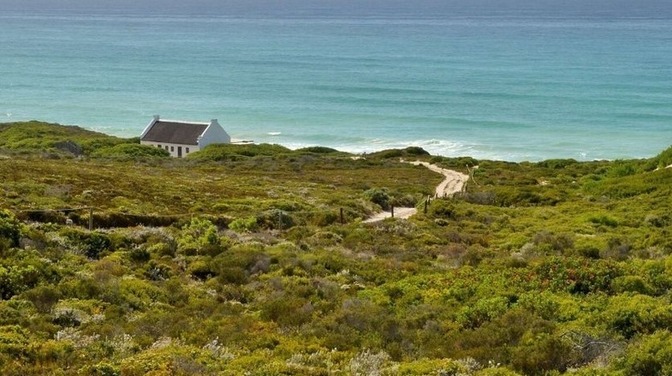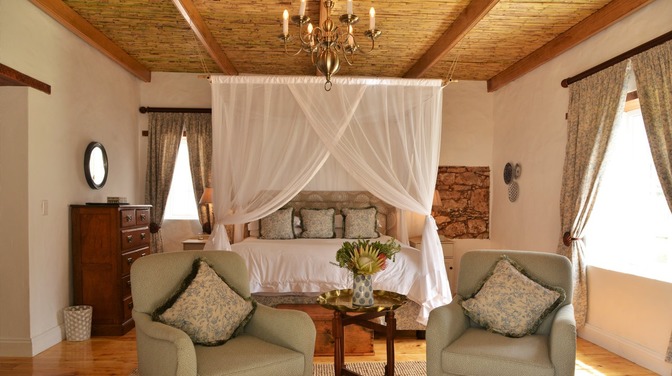Select a category
L’Agulhas is the quaint little seaside village sitting on the cusp of the southernmost point of Africa. It was originally dubbed Cabo das Agulhas by the Portuguese sailors that landed at this point. It means ‘Cape of the Needles’ and was so named because of the jagged reef and it was one of the only places where true North and magnetic North (the compass needle) coincide. With the French influence that came later, the town name was then changed to L’Agulhas.
The Agulhas point is the official divide between the Indian and Atlantic Ocean but it is not always the official divide between the Agulhas and Benguela currents. This divide varies between the Agulhas point and Cape Point. The significance of standing at the meeting place of two oceans is not lost, however. The raw energy of the surrounding natural environment is a constant reminder of this geographical hotspot.

This ocean is renowned not only for its untamed beauty but it is well-known amongst sailors for its hazardous passage. In the past, when the Clipper Route was the traditional route between England and Australia, New Zealand and the Far East the waters along this coastline claimed many ships along with the souls on board. The Clipper Route used to offer the fastest circumnavigation route of the world because of the strong westerly winds of the ‘roaring Forties’. To take advantage of these winds captains would lead their ships from England to Australia and then pass South Africa en route on their return. It was then the timeliest route that was taken head-on with the fastest ships and with the prospect of both great reward and great risk lying at the end of the voyage. On the one hand, due to the ground that was covered in the exceedingly speedy space of time for that era, rewards varied from wool, grain, gold clippers and other precious cargo. However, many were met with a fatal end.
The ‘Cape Horn’ was used to describe the treacherous coastline that the ships had to make their way through on the last stretch towards home. The ominous area was used interchangeably to describe Cape Point and Cape Agulhas. It is estimated that approximately 150 ships met their doom along this specific stretch of coastline. From the very first ship recorded, the Zoetendal in 1673, to the infamous Arniston that had only three survivors there are many tales that have been told. The HMS Birkenhead is one of the most famous of them all because the soldiers that stood steadfast whilst the women and children got off the ship safely caused the inception of the ‘women and children first’ protocol. Many of the artefacts from the ships – including portholes, figureheads, canons, coins and more – were collected and are now displayed at the Shipwreck Museum in Bredasdorp. Most of the trinkets and ship pieces come from the Queen of the Thames. This particular ship caused a stir because it was the first of its kind to be built for speed and was intended to create a regular line on the Clipper Route. Thus it was very unfortunate that it met its untimely end on its maiden voyage. Mistaking a "veldfire" (bushfire) for the Agulhas Lighthouse amidst the crew’s celebrating of St. Patrick’s Day, the ship was soon washed up on the rocks. Today the rocks are adorned with the defiant remains of the Meisho Maru, which has become something of a tourist attraction.
Once a ship was wrecked on the rocks it was common for an auction to be held. Greedy auctioneers would purposefully create fires to look like a lighthouse so that they could lure desperate seamen to their doom and loot their stuff back to Cape Town for a rewarding auction. There were so many shipwrecks that it has since been dubbed a ‘ship graveyard’. Finally in the 1840s there was a cry for a lighthouse to be built. The duty of designing and fundraising was left up to Colonel Charles Cornwell Michell. After several years the construction finally began on 1 April 1847 and the corner stone was laid on 8 January 1848. The limestone lighthouse was originally built in homage to the Pharoahs of Alexandria and is now the second oldest working lighthouse in South Africa as it was lit on 1 March 1849. During the day people can climb the 71 steps to take in the uninterrupted views and browse through the museum while at night the light watches over the sea and any sailors like a faithful shepherd.

Once a place of danger, the small coastal towns exudes tranquillity and has a close-knit community amidst this beautiful environment. Stand on the edge of a continent and breathe in the salty fresh breeze as the romantic tales of long forgotten times weave their way through the edge of your consciousness.







.jpg?width=200&height=94)









